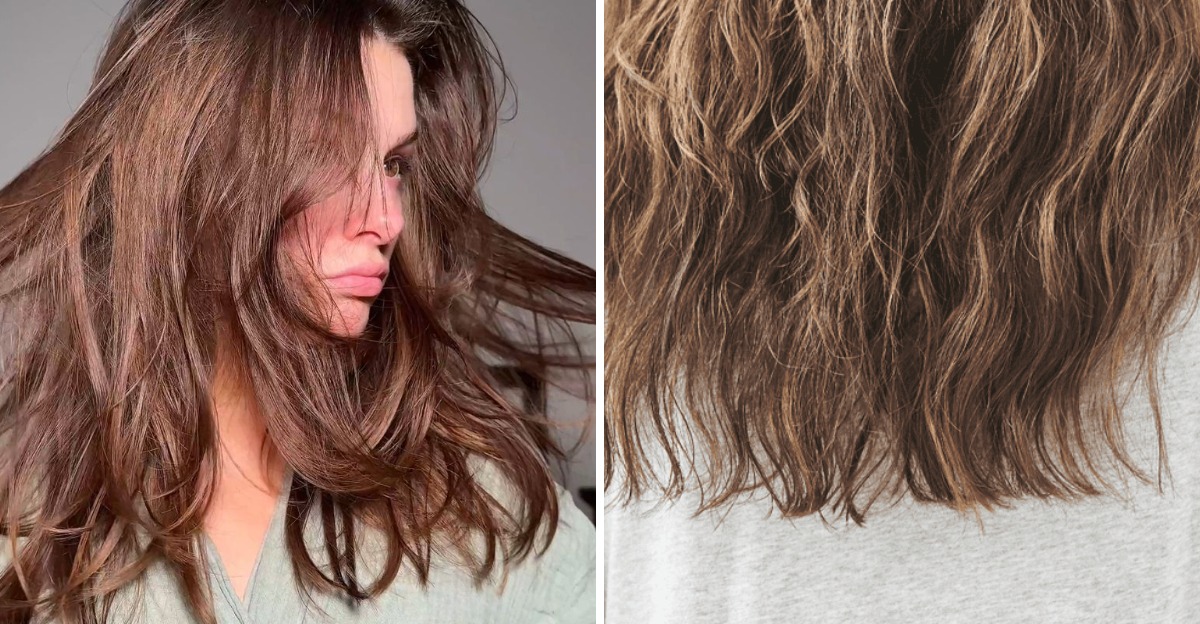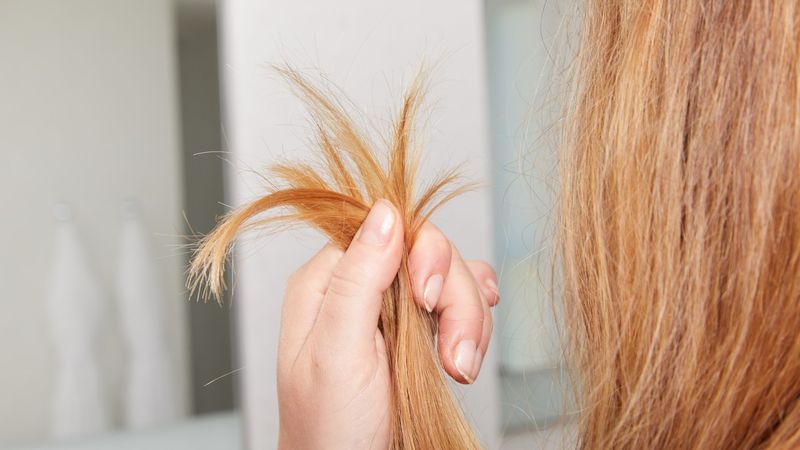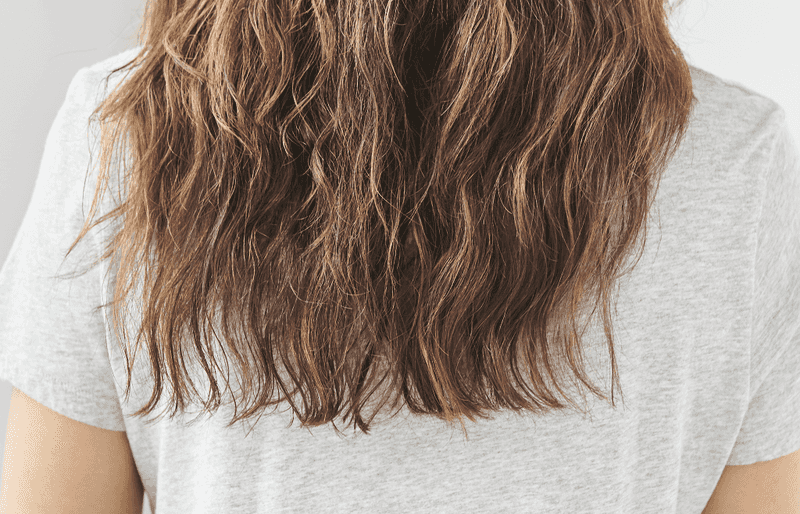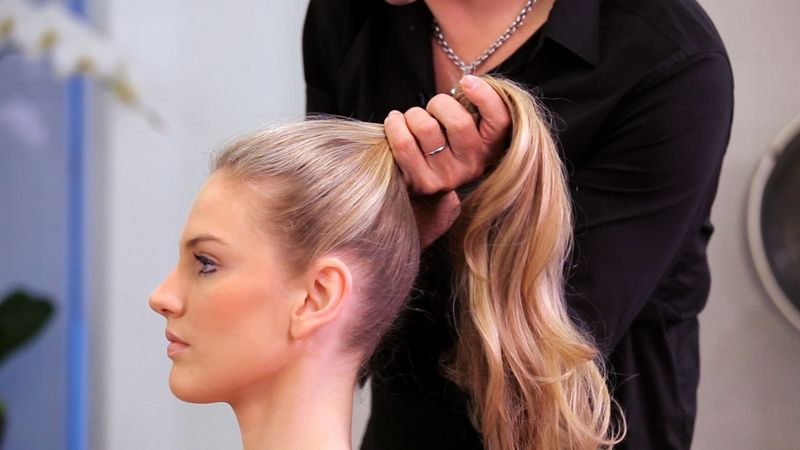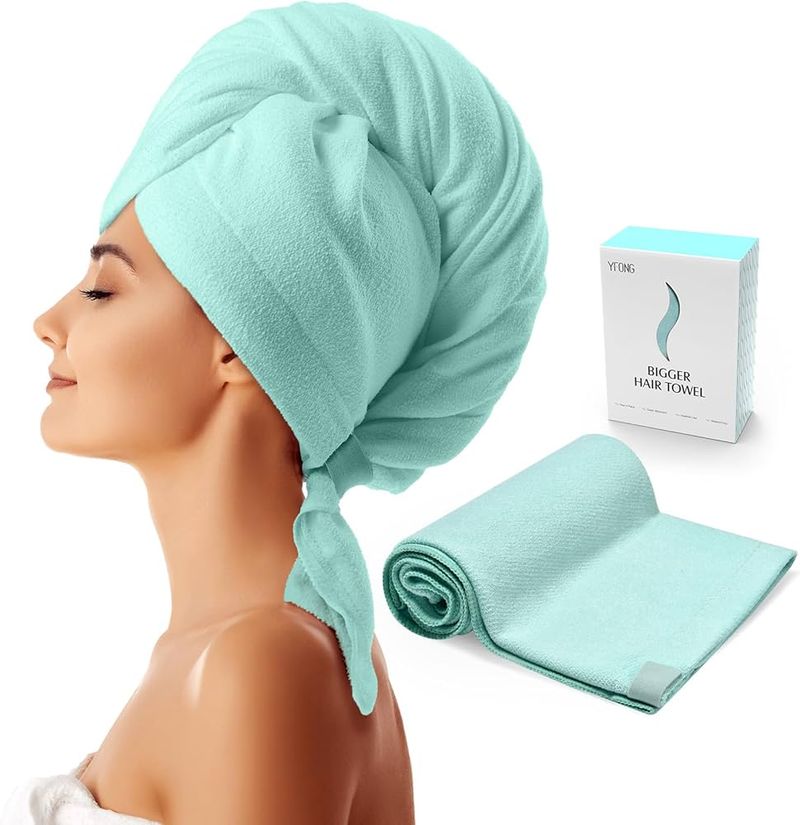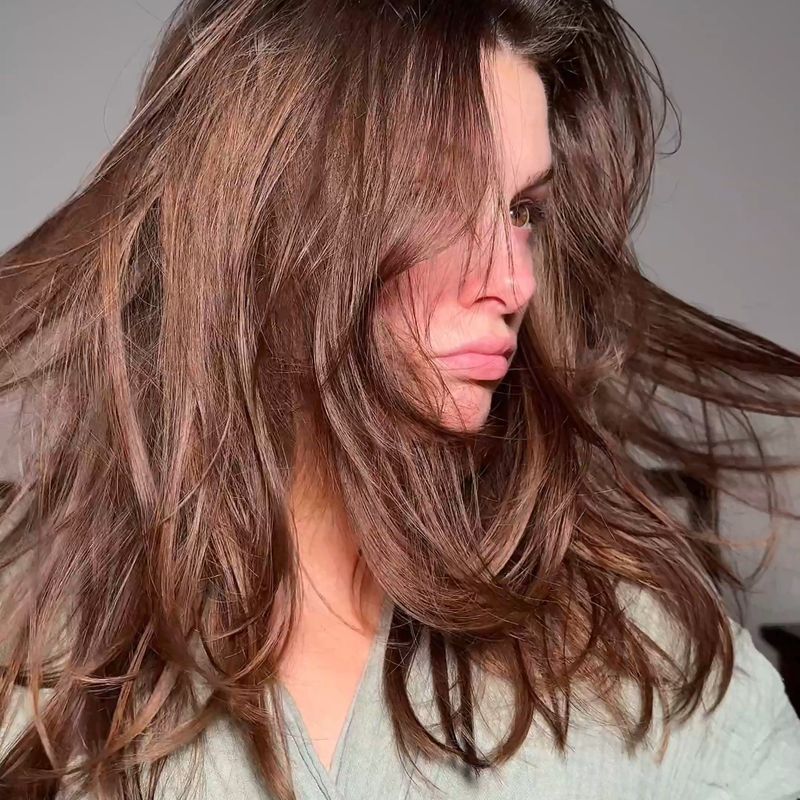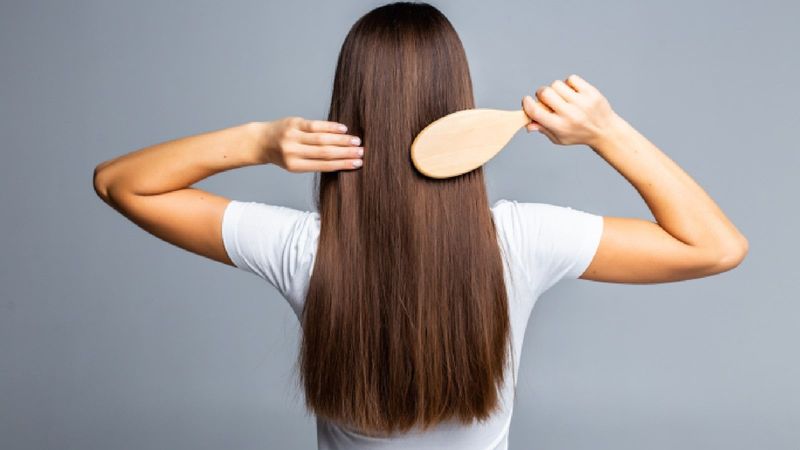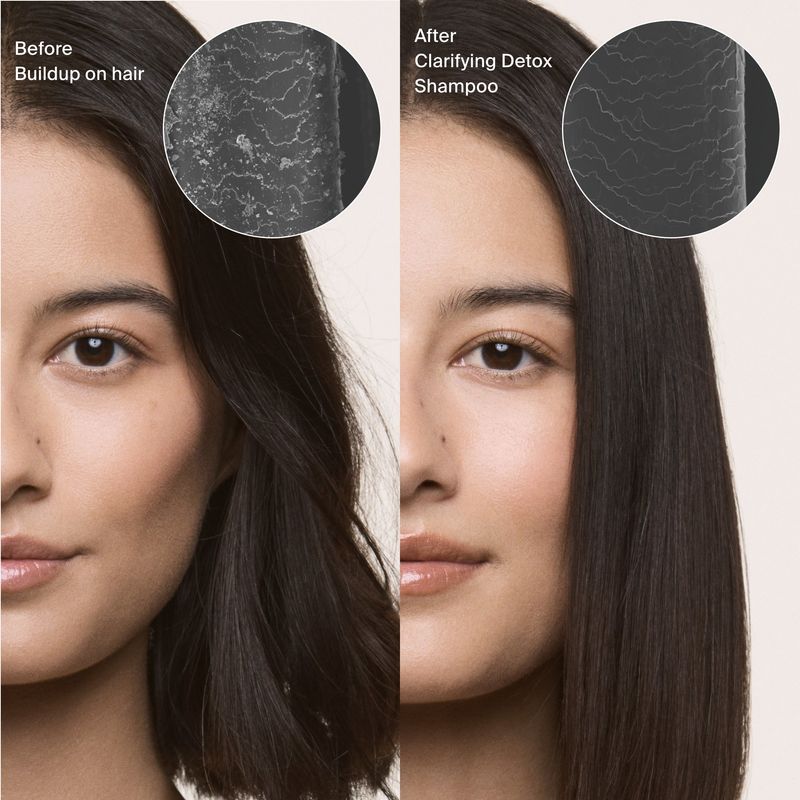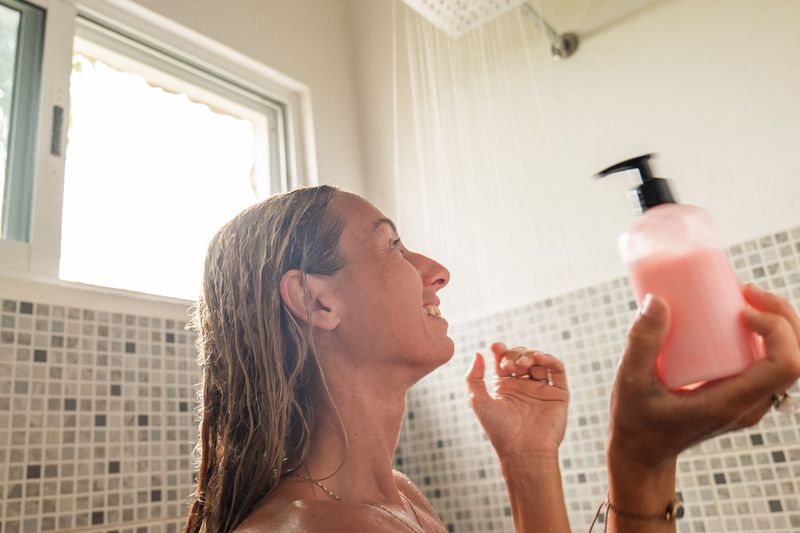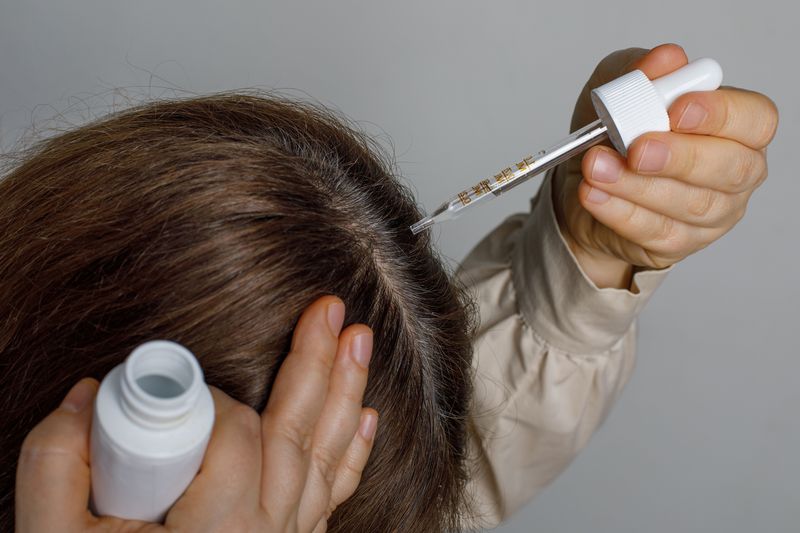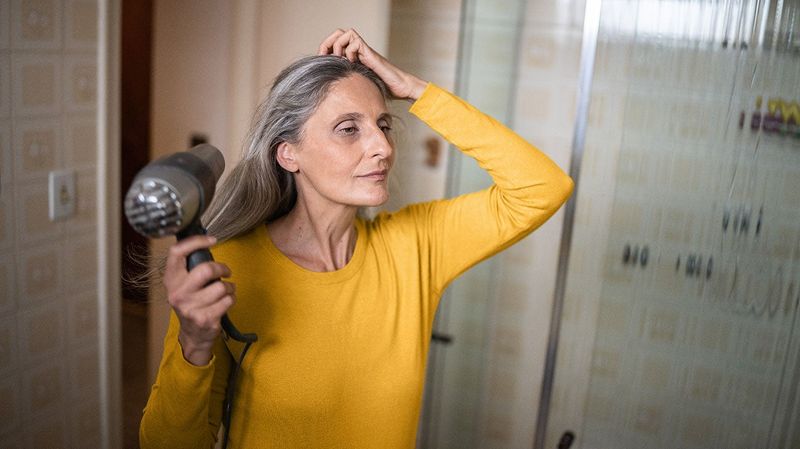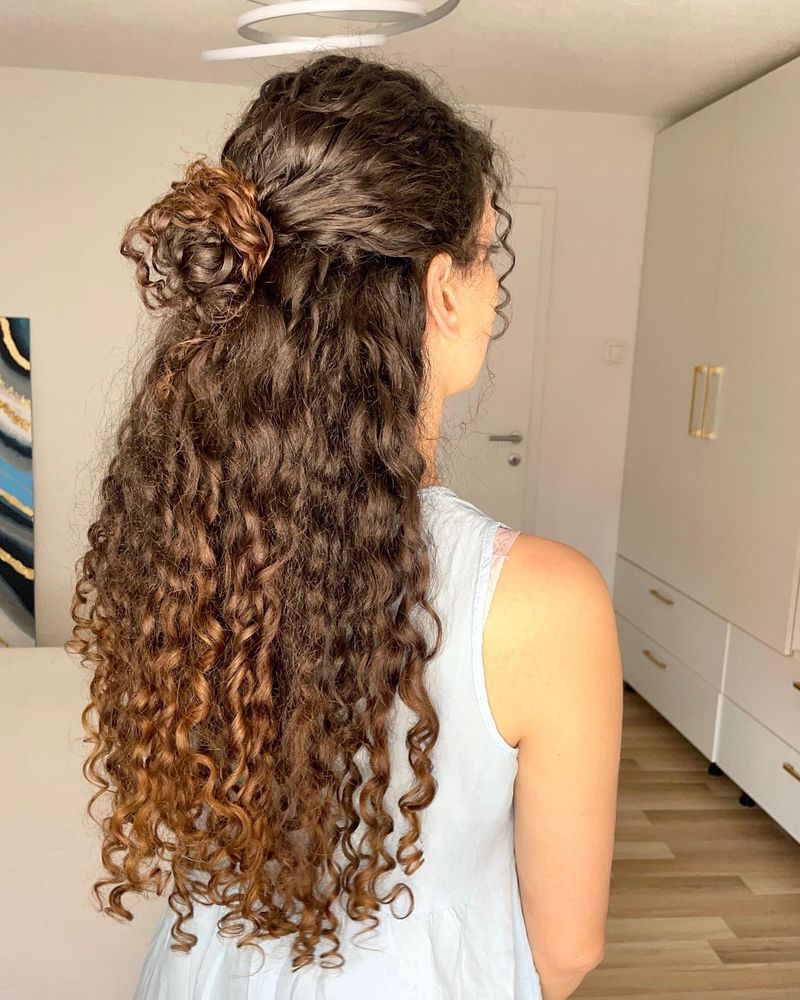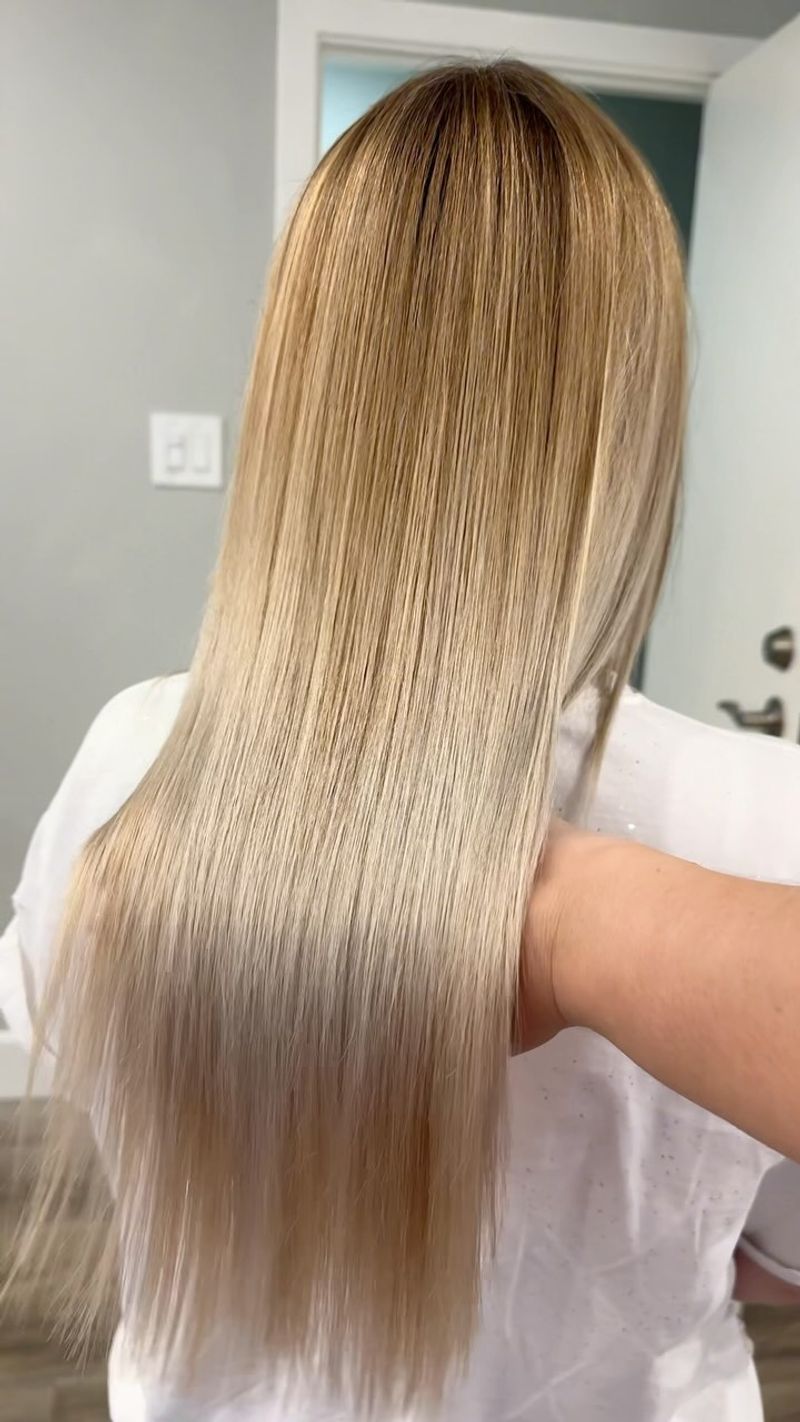Your hair faces daily battles against heat, chemicals, and environmental stressors that can leave it looking less than its best.
Whether you’re dealing with split ends or color fade, there’s a solution waiting to restore your hair’s natural glory.
1. Split Ends Nightmare
Those frayed, forked tips aren’t just unsightly—they’re a cry for help from your hair. Regular trims every 6-8 weeks prevent splits from traveling up the hair shaft.
Related: -7 Straight-Hair Problems No One Talks About And 8 Easy Fixes That Shine
Deep conditioning treatments with protein-rich formulas can temporarily seal ends between salon visits. No product can permanently fix split ends—only scissors can do that!
2. Heat Styling Havoc
Flat irons and curling wands can fry your strands from the inside out, leaving brittle, lifeless hair. Always use heat protectant spray before styling—it creates a barrier between your hair and hot tools.
Try embracing heat-free styling methods like braiding damp hair for waves or using foam rollers for bounce.
3. Sun-Scorched Strands
UV rays break down hair proteins and fade color, leaving your locks dry and brittle. Spritz on a UV-protective hair spray before beach days or extended outdoor activities.
Wearing hats provides physical protection while looking stylish. After sun exposure, use deep conditioning masks with antioxidants to repair damage.
4. Chlorine and Pool Problems
Pool chemicals strip natural oils and turn blonde hair green! Wet your hair with clean water before swimming—it reduces chlorine absorption. Special swimmers’ shampoos remove chemical buildup without harsh detergents.
Try applying a leave-in conditioner as a protective barrier before diving in.
5. Breakage from Tight Hairstyles
Slicked-back ponytails and tight braids can cause traction alopecia—hair loss from constant pulling. Give your hairline a break by alternating styles and positions of ponytails and buns.
Silk scrunchies and looser styles reduce friction. If you notice thinning edges, consult a dermatologist before permanent damage occurs.
6. Rough Towel Drying Damage
Aggressively rubbing wet hair with a terry cloth towel roughens the cuticle and causes frizz and breakage. Pat—don’t rub—with a microfiber towel or even an old t-shirt instead.
This gentle approach maintains your hair’s natural smoothness. Allow hair to air-dry partially before using any heat tools.
7. Humidity-Induced Frizz
When moisture in the air penetrates porous hair shafts, unwanted puffiness results. Anti-humidity serums containing silicones create a protective barrier against moisture absorption.
Deep conditioning treatments help fill gaps in the cuticle. For severely damaged hair, keratin treatments at salons provide longer-lasting frizz control.
8. Brittle Winter Hair
Cold weather and indoor heating create a double-whammy of dehydration for your locks. Weekly moisture masks with ingredients like shea butter and argan oil replenish lost hydration.
Humidifiers counteract dry indoor air. Wearing hats provides protection, but choose silk-lined options to prevent friction damage.
9. Product Buildup Burden
Layers of styling products can suffocate strands and block moisture absorption. Clarifying shampoos used once weekly remove residue without stripping natural oils.
Apple cider vinegar rinses (1 tablespoon per cup of water) naturally dissolve buildup. After clarifying, always follow with conditioner to restore moisture balance.
10. Hard Water Hardship
Mineral deposits from hard water build up over time, leaving hair dull and difficult to manage. Shower filters remove minerals before they reach your hair.
Chelating shampoos specifically formulated to remove mineral buildup can be used monthly. Follow with apple cider vinegar rinses to restore pH balance.
11. Elasticity Loss
Healthy hair stretches and returns to its original shape when wet. When elasticity diminishes, breakage follows. Protein treatments restore structure to weakened hair—look for hydrolyzed proteins on ingredient lists.
Balance protein with moisture treatments to prevent brittleness. Olaplex and similar bond-building products help reconnect broken hair bonds.
12. Medication-Related Thinning
Certain medications can alter hair growth cycles, causing thinning or texture changes. Consult your doctor if you notice significant hair changes after starting new medications.
Gentle, sulfate-free shampoos minimize additional stress on fragile hair. Volumizing products create the appearance of fullness while you address the underlying issue.
13. Aging Hair Changes
With age, hair naturally produces less oil and grows thinner in diameter. Specialized shampoos for mature hair contain fatty acids and antioxidants to combat dryness and brittleness.
Regular scalp massages improve circulation and stimulate follicles. Avoid heavy products that weigh down aging hair—opt for lightweight, nourishing formulas instead.
14. Midnight Snacking Hair Syndrome
Ever noticed those mysterious sticky patches in your hair after a late-night refrigerator raid? Midnight snacking leads to unconscious food transfers when you’re half-asleep, creating a playground for bacteria and leaving residue that weakens hair shafts.
Combat this unusual damage by keeping hair tied back during nighttime munching sessions. A silk sleep cap works wonders for protection against rogue ice cream drips and cookie crumbs. For existing damage, try a clarifying shampoo with apple cider vinegar to dissolve food particles.
Fun fact: The average midnight snacker transfers food to their hair approximately 36 times per year without realizing it!
15. Keyboard Warrior Friction Damage
Those marathon coding sessions or heated online debates might be secretly sabotaging your locks! The repetitive motion of leaning forward and rubbing the back of your head against chair headrests creates significant friction damage to the occipital region of your hair.
Ergonomic adjustments are your best defense. Position your chair and monitor at proper heights to prevent the unconscious back-and-forth motion. Consider a silk-covered headrest or apply a leave-in conditioner to vulnerable areas before settling in for long computer sessions.
Try rotating your workspace setup weekly to prevent consistent pressure points on the same hair sections. Your future healthy hair will thank you for being mindful of this modern-day hair hazard!

